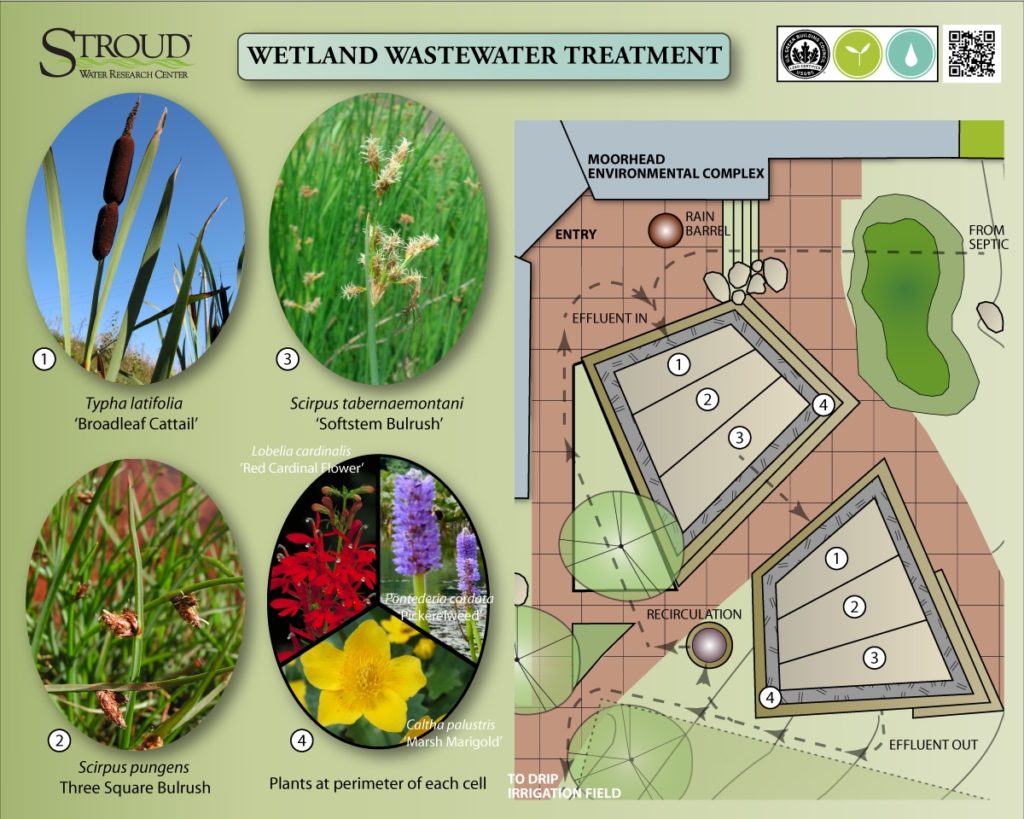Wetland Plants
Aquatic plants make excellent filters
Our wetland wastewater treatment system uses native plants that are adapted to growing in standing water. Their roots will remove heavy metals and nitrates from the water and foster the growth of beneficial microbes.
Two types of bulrush and the familiar cattail will grow five to ten feet tall and spread by rhizomes, while cardinal flower, pickerel weed, and marsh marigold will add their filtering powers and a splash of seasonal color.
Wetlands provide wildlife habitat
Because our wetlands work with subsurface water flow, we might not attract reptiles or amphibians, but the vegetation should provide food and nesting habitat for various birds and insects. Some birds use the downy seeds of cattails to line their nests.
Cattails are a favorite perching and calling spot for male red-winged blackbirds. Check out the video below of the males engaging in a “songspread” display where they puff out their brilliant red wing patches as they sing.
Not all wildlife is welcome. One of the advantages of a subsurface flow constructed wetland is that, without surface water, our wetland won’t breed mosquitoes!

